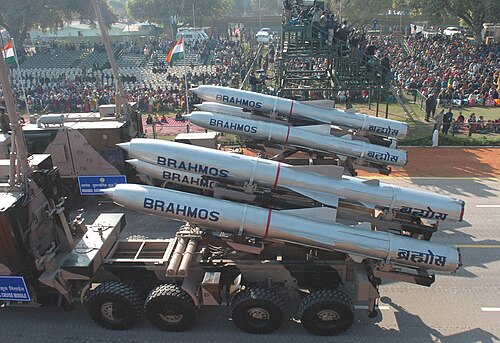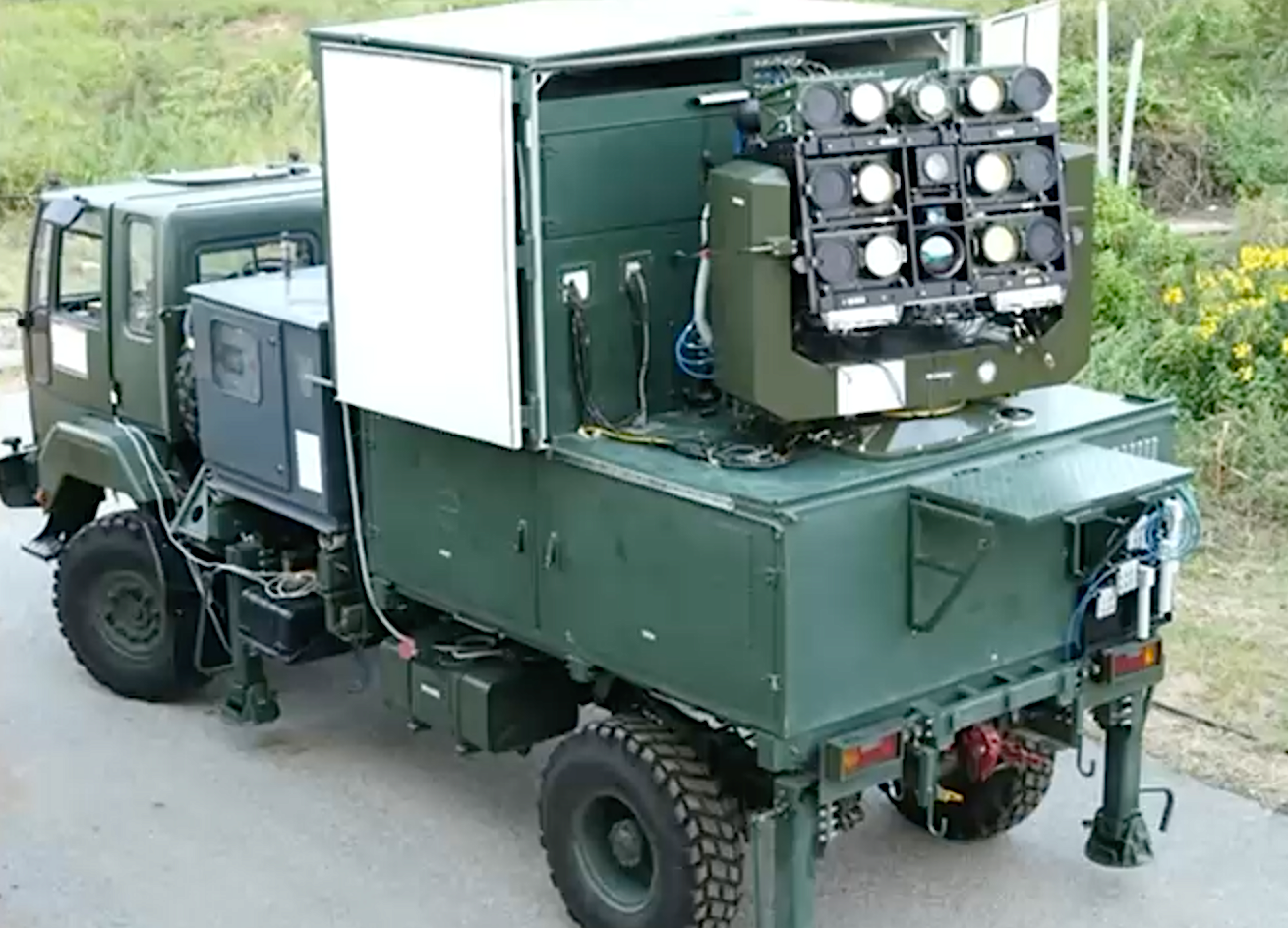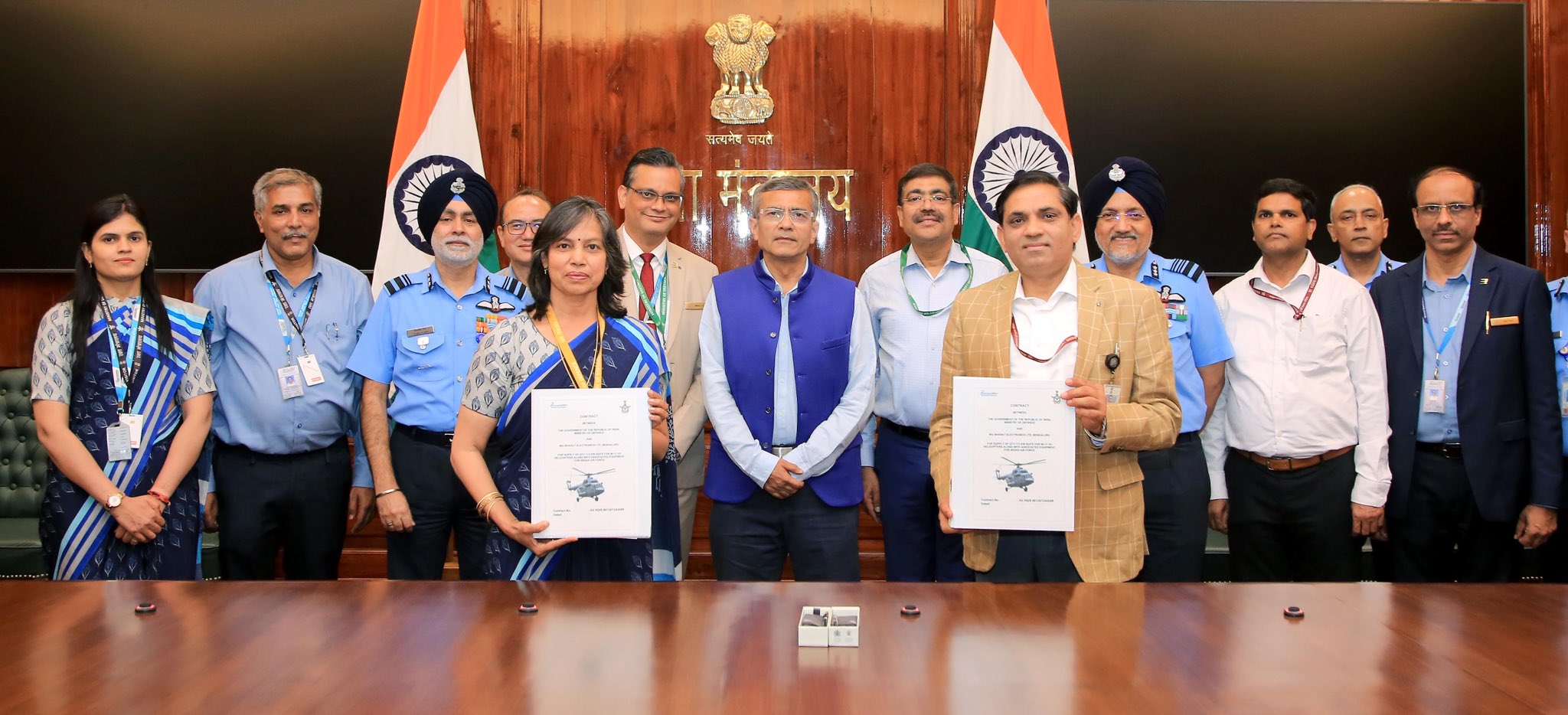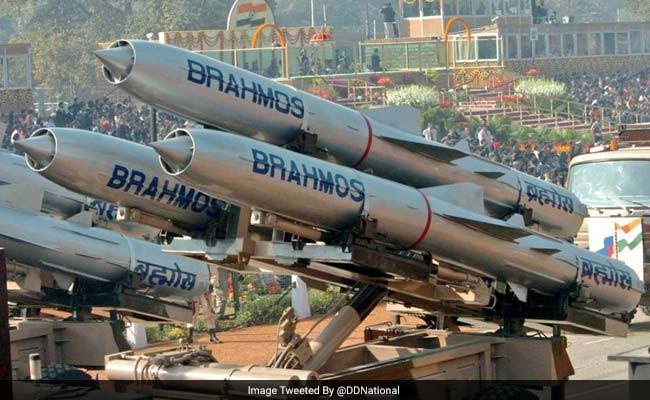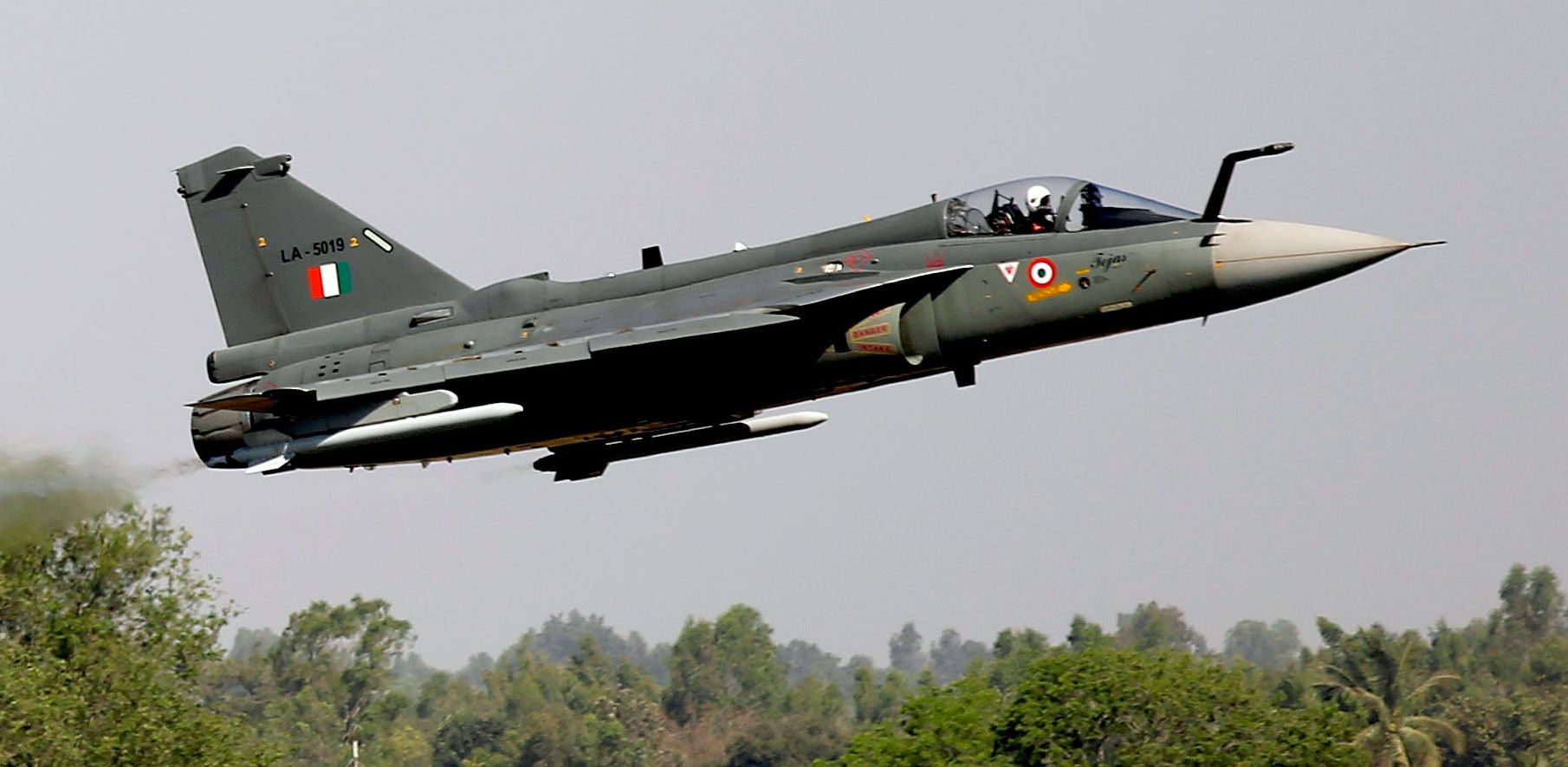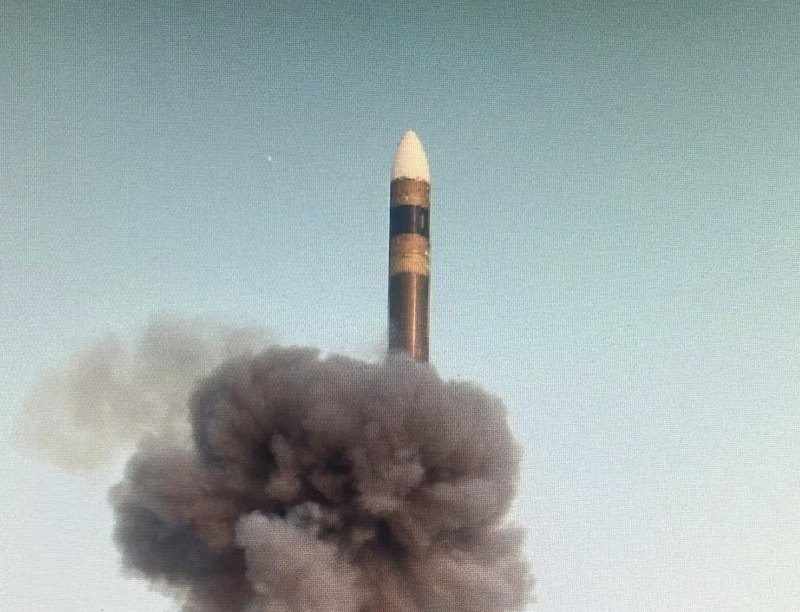 The MIRV-capable Agni V during its test-firing, on March 11, 2024. (Photo: Ministry of Defence)
The MIRV-capable Agni V during its test-firing, on March 11, 2024. (Photo: Ministry of Defence)
New Delhi: In a major boost to its strategic deterrence capabilities, India successfully test-fired the Agni V intercontinental ballistic missile equipped with multiple independently targetable reentry vehicle (MIRV) technology, on Monday. India had first tested the Agni V missile way back on April 19, 2012, which led to the-then prime minister, Manmohan Singh, to clear the integration of the MIRV technology in the missile.
The first test was followed by seven more tests and subsequently user trials over the years. However, after Monday’s test, New Delhi acknowledged the missile’s MIRV capability for the first time.
After Monday’s test-firing of the MIRV-capable Agni V, the prime minister, Narendra Modi, hailed the achievement by calling it “Mission Divyastra (divine weapon)” and commended the scientists of the Defence Research and Development Organization (DRDO) for their dedication.
The details of the launch location and the specific trajectory of the missile have not been disclosed yet. However, India had issued a Notam (notice to airmen, also called notice to air missions) over a very large area over the Bay of Bengal between March 11 and March 16, last week. India routinely issues Notams before test-firing of missiles. This time, the length of the no-fly zone given in the Notam was 3,500 kilometres – from Dr APJ Abdul Kalam Island off the Odisha coast towards south of Bay of Bengal, which is consistent with the Agni V’s test range.
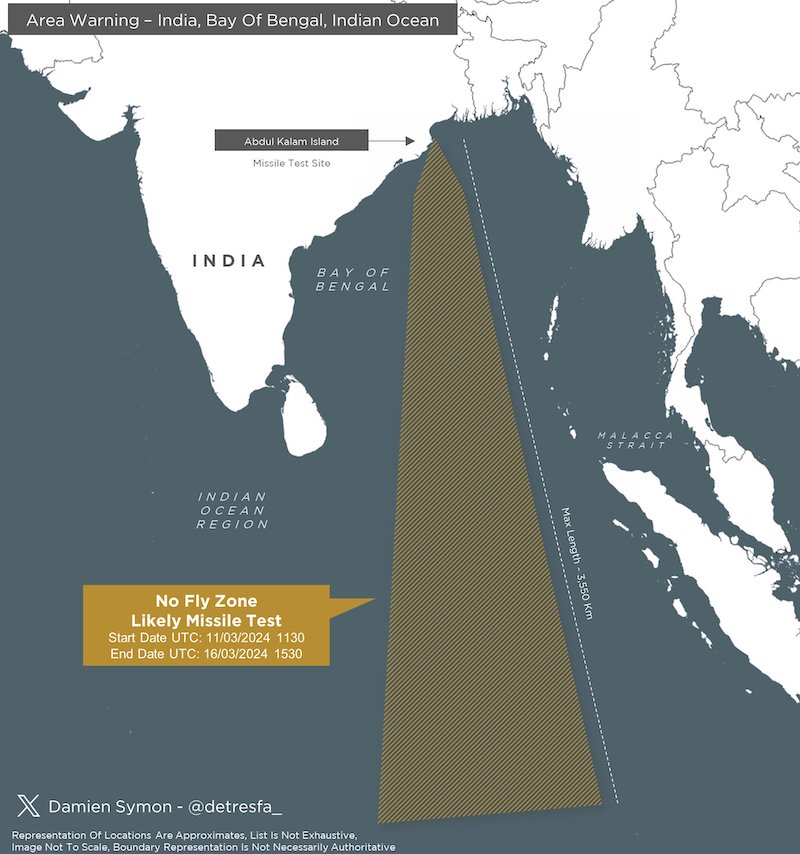 The no-fly zone over Bay of Bengal as was given in India’s Notam. (Image via X/@detresfa_)
The no-fly zone over Bay of Bengal as was given in India’s Notam. (Image via X/@detresfa_)
About Agni V
The Agni V is India’s most advanced long-range ballistic missile. India officially maintains that the range of the missile is less than 5,500 kilometres, which is less than the range for a missile to be categorized as an intercontinental missile. However, international researchers, especially Chinese researchers, have gone on record to say that the missile’s range is 8,000 kilometres.
The MIRV technology allows the missile to carry multiple warheads that can independently hit separate targets, significantly enhancing its offensive capability, and overcoming potential missile-defence systems.
The Agni V can be launched from road and rail mobile launchers using heavy-duty trucks and missile canisters.
The missile can reach a speed of up to Mach 25 (25 times the speed of sound or 30,600 kilometres per hour or around 19,000 miles per hour) at its terminal phase. Agni V is guided by a ring laser gyroscope (RLG) inertial navigation system, which can be optionally augmented by GPS/NavIC satellite guidance.
Indian scientists who developed this missile say that it has a circular error probability (CEP), also known as circular error probable, of less than 10 metres. In other words, it can hit a statutory target with an error margin of 10 metres or less.
It may be mentioned that the Agni series of missiles along with some other ballistic missiles, like the Prithvi series of missiles, are under the operational command of India’s Strategic Forces Command. The SFC is headed by a 2-star officer (major general equivalent from one of the three services) and reports to the Prime Minister’s Office.
The missile is primarily for enhancing India’s nuclear deterrence against China. Agni V brings the entire Chinese mainland under its strike range even from central India, which other missiles in India’s arsenal cannot. The missile also brings parts of Europe, Africa, and the Indian Ocean Region (IOR) under its range.
Analysts believe it strengthens India’s position as a major player in the field of missile technology and strategic deterrence.
The development, however, might raise concerns in the region, particularly neighbouring Pakistan and China, both of which possess nuclear arsenals. India maintains a policy of “no first use” regarding nuclear weapons, emphasizing their role in deterrence.
This successful test-firing is expected to contribute to ongoing discussions on disarmament and non-proliferation, prompting India to call for further international cooperation on these crucial issues.

